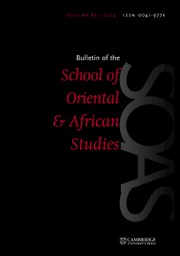The site in Mecca widely believed to be the birthplace of the prophet Muḥammad is now a public library, in which Saudi authorities have put up signs warning people against performing acts of worship there or visiting the site as an act of veneration. More than one thousand years ago, in 184/800–1 or 185/801–2, the famous scholar Wakīʿ b. al-Jarrāḥ was chased out of Mecca, and then Medina, for teaching that the prophet's corpse had shown signs of decay already before its burial. These two anecdotes, which bookend Adam Bursi's excellent new book, reveal the longstanding intensity of debates about the appropriate level of respect and veneration owed to sites and relics – both meanings often conveyed by the Arabic term āthār, “traces” – linked with Muslim holy figures, especially, of course, the prophet himself. Bursi sets out to contextualize the first emergence of such debates in the early Islamic centuries.
The book covers a wide range of related topics across its five main chapters, starting in Chapter 1 with early Muslims’ ideas about venerating graves and the wider context behind these ideas. Chapters 2 and 3 take us through the controversies that surrounded the veneration of sites mostly associated with prophets other than Muḥammad, for example the Maqām Ibrāhīm in Mecca or the body of Daniel in Khuzistan. Chapters 4 and 5 bring us back to Muḥammad and the developing conflicts over the nature and location of the prophet's body after his death as well as the emergence of practices of veneration, and opposition to such practices, at sites increasingly identified with some aspect of Muḥammad's life and career.
This book is very thoroughly researched and is based on a wide range of primary sources from hadith collections to histories, genealogies, biographical dictionaries and beyond, including works by Shii and Ibadi scholars as well as (proto-)Sunnis. It is also built on engagement with an admirably extensive collection of recent modern scholarship, including studies addressing similar debates found among late antique Christian and Jewish groups. A number of issues and case studies are covered: most of these deal with sites in the Hijaz, but occasionally we are taken further afield, for example to Jerusalem, Damascus, and Khuzistan. Bursi gives a very good overview of the nature and contours of the relevant debates, clearly demonstrating how the opinions and arguments examined on all the various practices discussed ranged across the spectrum from the broadly supportive to the “strongly iconoclastic” (p. 45). As readers of his other publications might expect, Bursi also places considerable emphasis on the importance of the material turn to our understanding of early Islamic practices and insists that we can read our extant textual sources with “a materially-inclined eye” to reveal “an embodied world of venerated objects and places” (p. 20).
So, what do we learn? The late antique context is crucial for almost all the topics and practices studied here. It is made abundantly clear that Muslims in the early Islamic centuries were participating in many of the same discussions as their non-Muslim neighbours. (It is mostly Christian and Jewish parallels that are considered in this book.) We discover that “Much like the slippage between these categories at Christian saints’ tombs, the graves of Muslim holy persons were sites where the boundary between heaven and earth was not entirely distinct” (p. 146). Yet Muslims were using their discussions to make various cases for the ways in which their community was distinct from those of their neighbours: “These stories utilise the late antique discourse of holy relics, but adapt that discourse's topoi for emergent Islamic conceptions of history and community, and for early Muslims’ sentiments on how to engage with bodies and sacred space” (p. 83). We also learn repeatedly that right and wrong practice was always up for debate, sometimes seemingly even within individual families: the final chapter gives plenty of examples of the frequent occasions on which the second caliph ʿUmar b. al-Khaṭṭāb is used as an authority sceptical of practices of venerating sites associated with the prophet, while his son ʿAbd Allāh is equally frequently claimed as an authoritative proponent of “following the prophet's traces” (ittibāʿ āthār al-nabī). Bursi is also abundantly clear that seeking to see any of these debates through the prism of “popular” versus “elite” practice is a fool's errand, though concerning the Maqām Ibrāhīm he does interestingly note that there may be a popular/elite distinction in terms of physical access to such sites (p. 65).
There are gaps in the coverage, though it seems somewhat unfair to criticize a book for what it does not cover. Although some portable relics, such as the prophet's hair, are discussed briefly in places, the overwhelming focus is on generally static sites and graves. (Although we do learn that someone may have tried to steal and so move the Maqām Ibrāhīm at one point.) It does feel like there was an opportunity here to bring discussion of relics of this kind into the wider study of ideas about the veneration of prophetic “traces”, a feeling only emphasized on reading the very effective but tantalizingly brief discussion of ideas about the prophet's sandals at the very end of the book. On the whole, however, such minor issues aside, this is an excellent book and will reward reading by all studying and researching early Islamic history.



